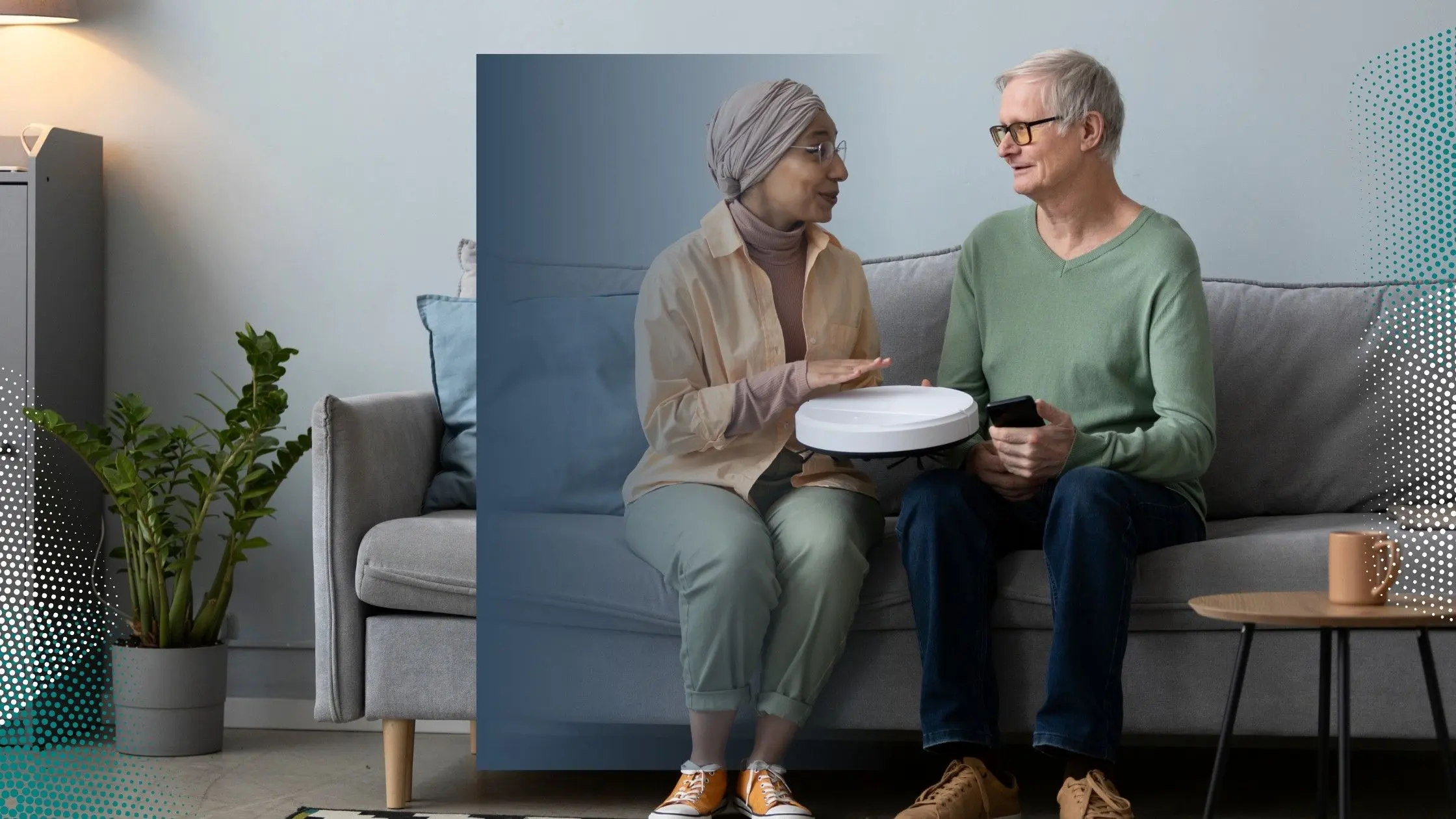How Home Care Providers Win Over Millennials and Gen Z Workers
Discover how home care providers can attract and retain millennial and Gen Z workers through flexible schedules, tailored benefits, and targeted training.

Christian Joshua
Published in Senior Living
As the demand for in-home caregivers rises alongside the aging population, home-based care agencies are turning to millennials and Generation Z to fill critical roles. Expanding their workforce is essential in an industry facing labor shortages, but without modernizing recruitment and retention methods, providers risk losing these valuable employees.
To appeal to and keep millennial and Gen Z caregivers, agencies are introducing tailored benefits and revamping hiring strategies—leveraging social media channels and even gamification—to address the often “invisible” nature of home-based care positions.
“We’ve found that millennial caregivers are driven by purpose, flexibility and professional growth,” MissionCare Collective CEO Brandi Kurtyka told Home Health Care News. “Unlike previous generations who may have prioritized job security and long tenure, millennials seek alignment with an organization’s mission, want to feel valued day-to-day and expect a clear path for development.”
Get Periodic Updates Straight To Your Inbox. Sign Up To Our Newsletter Today.
MissionCare Collective, based in St. Petersburg, Florida, is a staffing and recruiting firm focused on caregiver placement and operates parent companies myCNAjobs and CoachUp Care.
Although Generation Z (ages 13–28) and millennials (ages 29–44) are sometimes grouped together, key differences exist in how each generation responds to recruitment, training, onboarding, recognition and management.
Organizations striving to boost recruitment and retention have rolled out targeted programs and shifted their cultures to align with each generation’s expectations. Otherwise, providers risk higher turnover rates and lower productivity, according to research from the Sorenson Impact Institute at the University of Utah.
Get Latest Senior Living Publications directly into your INBOX TODAY.
“Millennials are more likely to seek out companies that value their contributions and offer better work-life balance, leading to higher turnover rates if their current employer isn’t meeting their needs,” reads a paper from the Sorenson Impact Institute.
When millennial and Gen Z caregivers do join the home-care field, they often excel due to strong technological skills, a collaborative approach and their ability to leverage online resources for support, according to a study from the University of Utah College of Nursing in Salt Lake City. They frequently tap into online groups or social media to connect with other caregivers, helping them navigate the challenges inherent to caregiving.
Boosting Flexibility
Younger workers increasingly view themselves as more than just their jobs and expect employers to recognize that. The World Economic Forum reports that 73 percent of Generation Z employees prefer permanent flexible work options—whether that’s a hybrid mix of remote and in-person shifts, a four-day workweek or the freedom to set their own hours.
“Young caregivers are looking for flexibility,” Kerin Zuger, Chief Operating Officer at Caretech, told Home Health Care News. “You’ll attract [workers] with flexibility, but you also have to understand their needs.”
Caretech, headquartered in Omaha, Nebraska, provides non-medical home care services—such as personal care, companionship and household assistance—to clients across Nebraska, Wyoming and Iowa.
Offering flexible schedules and asking whether employees prefer regular shifts or on-call assignments shows that providers value caregivers’ lives outside of work. This flexibility not only helps with retention but also builds trust and loyalty, Zuger said.
“These generations] are mission-driven, but they can’t pour from an empty cup,” Kurtyka said. “Employers who build infrastructure around their well-being – emotional, financial and professional – will not only retain them but help them thrive.”
Aligning with Employee Values
Millennial and Gen Z workers often look for meaning in their caregiving roles. They want jobs that let them develop personal skills, improve the lives of those they care for and foster creativity, according to Activated Insights. Many millennials earned degrees during economic uncertainty, so they value strong earning potential, a comprehensive benefits package and tuition reimbursement.
Gen Z employees, on the other hand, may prioritize gamification and immediate incentives over long-term benefits.
“Gen Z employees aren’t quite at the age where they care about benefits so much,” Zuger said. “They like the idea of gamification and incentives. You can relate to them through culture and flexibility. However, millennials are different—they’re looking for benefits. They want to know what you offer, like a 401(k). Targeting and understanding those demographics has been important for us.”
Professional development remains a common priority across both generations. Growth doesn’t always mean climbing a clinical ladder; for many caregivers, it’s about honing skills to better serve clients, building confidence in their roles or finding paths to higher pay.
Tackling an “Invisible” Industry
Young adults interested in healthcare or already studying in related fields are likelier to seek caregiving roles, Kurtyka noted. But many millennials and Gen Z job-seekers simply aren’t aware that home care can be a viable career unless they’ve had personal experience or exposure through school or work.
“Caregiving roles – especially in home care – are often ‘invisible jobs’ to those outside the industry,” Kurtyka said. “Many young adults simply aren’t aware these opportunities exist unless they’ve had a personal caregiving experience or have been exposed through school or work.”
Zuger added that attracting younger workers calls for creativity to overcome this invisibility.
“Engaging them on a social media platform is a great way to get their attention,” Zuger said. “We recruit through fun dances on TikTok. We also use Handshake. Use the channels younger generations rely on—whether that’s through parents, counselors, schools or the web.”
When retaining younger employees, Caretech relies on many of the same strategies used to recruit them.
“It’s flexibility in staffing. It’s praising. They want the accolades,” Zuger said. “The opportunity to advance is also vital to caregivers.”
Get Latest Senior Living Publications directly into your INBOX TODAY.
She also noted that employers should accept that younger workers often won’t stay for life—and that’s okay.
“They do good work, and they’re reliable, but they’re younger, and they’re advancing in their careers,” she said. “We provide opportunities like certifications, reimbursement for schooling and advancement. People have taken advantage of those opportunities for us, allowing them to continue as caregivers while planning for their next role. They are great ways to keep employees around, too.”
Kurtyka added that many younger caregivers leverage their roles as stepping stones.
“Through myCNAjobs, we’ve seen many human resources or social work students work as caregivers while completing their degrees,” Kurtyka said. “They’re still deeply committed to quality care but also value transferable skills like communication, leadership and problem-solving.”
Tailoring Training for the New Generation
Onboarding and training younger caregivers requires adapting beyond traditional methods. Differences in communication styles, technology use and attitudes toward authority mean that providers can’t simply repeat the training approaches used for older generations, according to Activated Insights.
“Age groups like to be managed differently,” Zuger explained. “Millennials or older individuals expect regimented training processes and preparation for the job. They want black-and-white policies and procedures. Gen Z is different. They want to do things their way. So, we often show them the recommended way to do things and explain that the client has specific needs—how you meet those needs is part of relationship building.”
For Gen Z, using empathy, leading with emotion and guiding learners to find solutions—rather than just giving them answers—works better than a top-down approach.
“Rethink how you onboard, orient and train a younger generation,” Zuger said. “A lot of it is around emotional intelligence and how to work through varying sorts of engagement, working one-on-one and looking people in the eye.”
Activated Insights recommends that trainers clarify the “why” behind each procedure instead of relying on rank.
Managing the Unique Pressures on Younger Caregivers
Younger caregivers often face a mix of emotional, financial and systemic pressures—juggling student debt, economic instability, mental health concerns and caregiving responsibilities for family members, all while working in emotionally demanding jobs. MissionCare Collective research finds that caregivers are three times more likely to experience anxiety and depression, a reality heightened by the isolating nature of home-based care and the lack of traditional workplace support.
Get Latest Senior Living Publications directly into your INBOX TODAY.
“To genuinely support younger employees, employers must go beyond the basics,” Kurtyka said. “Cultivating a culture that prioritizes emotional support, providing workforce funding opportunities—such as wellness reimbursements—and investing in career growth is essential. When employers cannot pay more, they can foster a culture that drives results.”
By designing benefits, training and management practices around purpose, flexibility and support, home care providers can successfully attract and retain the millennial and Gen Z workforce vital to meeting the growing demand for in-home care services.

Senior Living
One Phone Call Could Be Your Best Resident Lead — Here’s Why
Optimize phone calls in senior living sales with b...

Senior Living
Senior Living Market Booms: Occupancy Back to 90%—Strongest Since 2017
H1 2025 report: senior living occupancy rebounds t...

Senior Living
Why 2025 Could Be the Year Senior Living Deals Make a Major Comeback
Senior living investors reset for 2025: accessible...

Senior Living
How To Find Budget-Friendly Senior Housing Options
Discover affordable senior housing solutions in th...